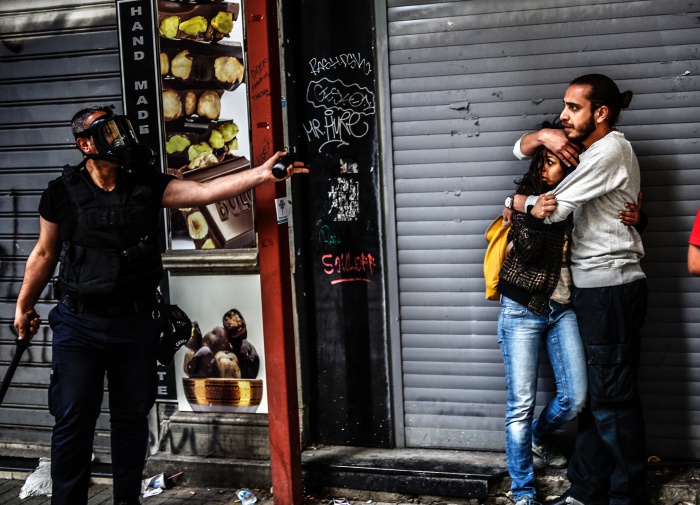May 27 of this year marked the fifth anniversary of the Gezi Park protests, which on the one hand pushed then-Prime Minister Recep Tayyip Erdoğan and his supporters towards the universe of authoritarian myths, while on the other forced Turkish dissidents into the digital world to make their voices heard.
If you read the pro-government media these days, they will tell you how foreign powers wanted to topple Erdoğan and his ruling Justice and Development Party (AKP) by using terrorist groups during the protests. AKP supporters mostly focus on the financial aspects of Gezi Park, arguing that the demonstrators harmed the Turkish economy by causing a loss of around 160 billion Turkish lira.
That might be the only sane argument coming from AKP side because during the protests, the pro-government media pushed a certain rhetoric about the importance of Erdoğan for Turkey’s future through which the AKP became more of a mythical cult than a political party.
That was the time when then-President Abdullah Gül and Erdoğan started to part ways, with the former coming to terms with the protestors while the latter escalated the tension. Once a party bigwig, Bülent Arınç also disputed Erdoğan’s approach, which killed his political career.
Almost six months later, in December 2013, an investigation into Erdoğan’s close circle of businessmen and ministers probably fed his paranoia of losing power.
However, as a strongman, Erdoğan has never lost his temper since Gezi Park, crafted a politics based on the tension between “us” versus “them” and kept winning elections while tightening his grip over the judiciary and the media. In every move, the AKP administration saw an opportunity to add something new to the “resurrection” mythology, which reached a peak after an unsuccessful coup attempt on July 15, 2016.
One of the turning points of the Gezi Park protests, which lasted almost 20 days, was the day protesters realized mainstream news channels like CNN Türk and NTV, once considered to be secular, non-partisan news sources, had not been broadcasting the incidents.
When the protests started after the AKP government unveiled a plan to destroy the park and instead resurrect a historic building, everybody expected a small demonstration concerning environmental damage to Taksim Square. However, police brutality led to a nationwide wave of protests in 79 provinces, and Gezi Park suddenly became a symbol of resistance against the AKP, which had been in power for more than a decade at the time.
The mainstream media’s reluctance to cover the protests caused dissidents to understand the extent of Erdoğan’s control over businessmen, who own most of the popular TV channels.
In this state of affairs the Gezi Park protests found their place on social media. On May 29, 2013 there were around 1.8 million active Twitter users in Turkey, whereas on June 10, 2013 the number had increased exponentially to 9.5 million. Between these dates, more than 143 million tweets were sent into the Twitter sphere from Turkey, both related and unrelated to the incidents, far higher than previous statistics.
That was only the beginning. Since then, the Internet and particularly social media have become the last bastion of free expression for dissidents. Journalists launched new initiatives, taking the place of mainstream media. Periscope and YouTube broadcasts replaced popular TV channels.
Online platform Oy ve Ötesi’s calls for volunteers during vote counts in elections to avoid fraud; 140journos, a citizen journalism effort-based media outlet circulating news on social media; DoğrulukPayı, a Twitter watchdog account fact-checking politicians’ words; and Teyit.org, another Twitter account fighting fake news, were some of the successful implementations of the digital media that were enabled following the spark of Gezi Park.
Yet, according to a new survey conducted by the KONDA polling company, 29 percent of Turkish voters do not go online, while some 8 percent use the Internet but avoid social media.
More importantly, Erdoğan turned the media landscape into a mere propaganda machine by controlling almost 90 percent of media outlets after the Doğan Media Group’s sale to the Demirören Group, owned by a pro-government businessman.
Still, the government cannot afford to ignore the digital world entirely. Thus, they are trying to retaliate, as they did following the T A M A M campaign on Twitter, which became an instant phenomenon, saying “Enough” to Erdoğan over his remarks implying he would step down if the nation were to say “OK” (TAMAM).

